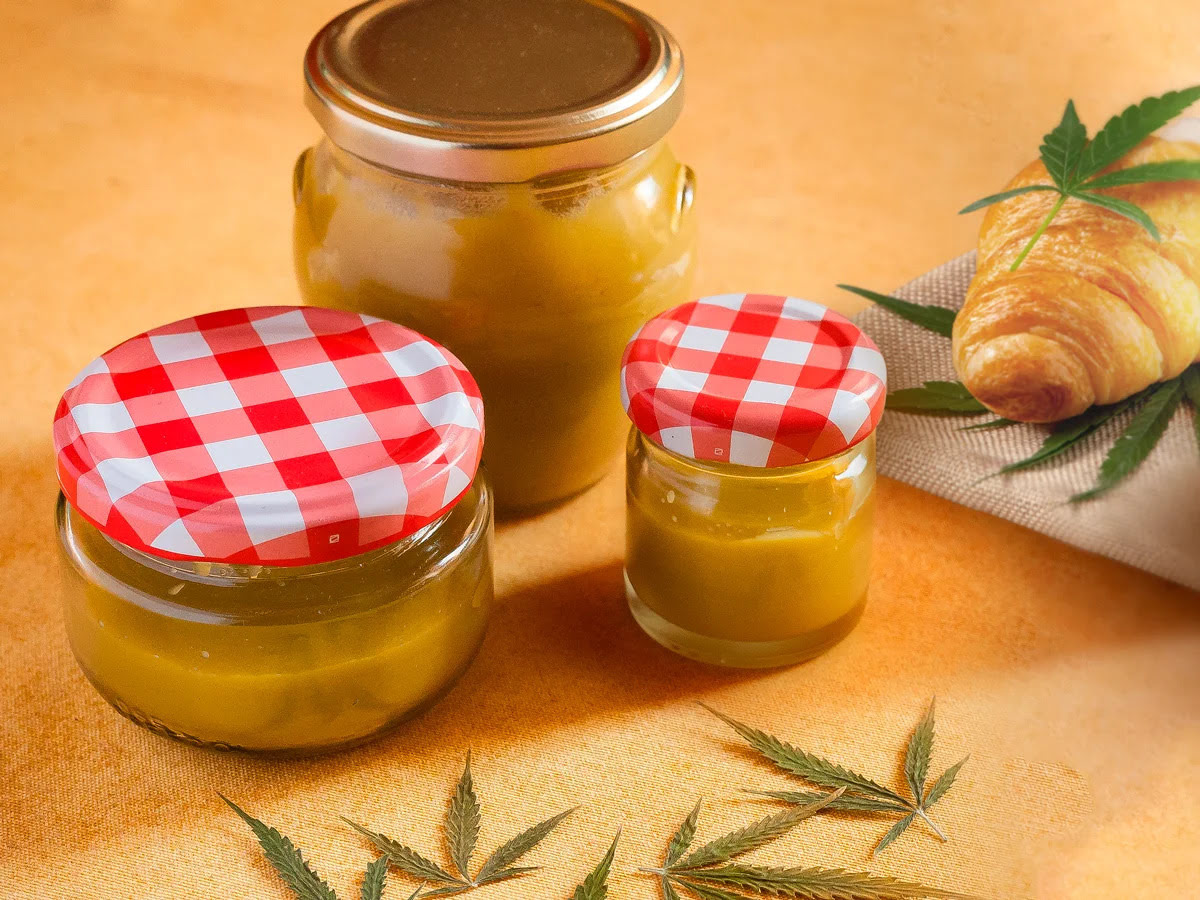

Articles
How To Store Cannabutter
Modified: August 28, 2024
Learn the best methods for storing cannabutter in this informative article. Discover how to keep your homemade cannabis-infused butter fresh and potent for longer periods.
(Many of the links in this article redirect to a specific reviewed product. Your purchase of these products through affiliate links helps to generate commission for Storables.com, at no extra cost. Learn more)
Introduction
As the popularity of cannabis-infused recipes continues to rise, so does the need for a reliable method to preserve one of its key ingredients: cannabutter. Whether you’re making homemade edibles or looking to store excess cannabutter for future use, knowing how to properly store it is essential to maintain its potency and freshness.
Cannabutter, as the name suggests, is a combination of cannabis and butter. It is created by infusing butter with the active compounds found in cannabis, primarily THC (tetrahydrocannabinol). This versatile ingredient serves as the foundation for countless cannabis-infused recipes, from cookies and brownies to savory dishes like pasta or mashed potatoes.
While fresh cannabutter can be used immediately, there are many reasons why you may want to store it for future use. Perhaps you’ve made a large batch and want to portion it out over time, or maybe you’ve received a gift of cannabutter and want to save it for a special occasion. Whatever the reason, proper storage will help maintain potency and prevent the growth of harmful bacteria.
Before diving into the specifics of storing cannabutter, there are a few factors to consider. First and foremost, it’s important to remember that cannabutter is a perishable product and will eventually spoil if not stored correctly. Additionally, the potency of cannabutter can degrade over time, so it’s crucial to store it in a way that minimizes exposure to air, light, heat, and moisture.
Choosing the right storage container is key to preserving the quality of your cannabutter. Opt for a container that is airtight, leak-proof, and made of a material that is resistant to odors and flavors. Glass containers with a tight-sealing lid are an excellent choice as they prevent the absorption of odors and provide a clear view of the contents. Avoid using plastic containers, as they can easily absorb odors and may not provide a proper seal.
One of the fundamental decisions to make when storing cannabutter is whether to refrigerate or freeze it. Both methods have their pros and cons, and the choice will largely depend on your specific needs and preferences. Refrigerating cannabutter offers convenience as it keeps it soft and spreadable, while freezing extends its shelf life. We will explore both options and provide step-by-step instructions for each.
In this article, we will guide you through the process of properly storing cannabutter, ensuring its freshness and potency for future use. We will also provide tips on maintaining freshness, labeling and organizing stored cannabutter, and address frequently asked questions surrounding its storage. So, let’s dig in and discover the best practices for storing and preserving your valuable cannabutter.
Key Takeaways:
- Properly storing cannabutter is essential to maintain its potency and freshness. Whether refrigerating or freezing, airtight containers and labeling are key to preserving its quality.
- Consider factors like composition, quality of ingredients, and storage containers when storing cannabutter. Refrigeration offers convenience, while freezing extends shelf life. Proper packaging and labeling are essential for freshness.
Read more: How To Store Store-Bought Bread
What is Cannabutter?
Cannabutter, also known as cannabis-infused butter, is a key ingredient used in a wide array of cannabis-infused recipes. It is made by infusing regular butter with the cannabinoids found in cannabis, most notably THC (tetrahydrocannabinol), the compound responsible for the psychoactive effects of marijuana. Cannabutter acts as a base ingredient that can be used in both sweet and savory dishes, allowing you to easily incorporate the effects of cannabis into your favorite recipes.
The process of making cannabutter involves decarboxylating cannabis, which activates the THC and other cannabinoids present in the plant material. Decarboxylation typically involves heating the cannabis in an oven to convert the inactive forms of THC and CBD (cannabidiol) into their active counterparts. Once decarboxylated, the cannabis is combined with butter, allowing the cannabinoids to infuse into the fat molecules.
The potency of cannabutter can vary depending on several factors, such as the strain of cannabis used and the ratio of cannabis to butter. It’s essential to calculate the dosage properly to ensure that each serving of your infused recipe contains the desired amount of THC. This is particularly important for individuals who are new to cannabis or have a low tolerance.
Cannabutter is highly versatile, allowing you to experiment and get creative with your culinary endeavors. From classic cannabis-infused brownies and cookies to infused sauces, salad dressings, and even beverages, the possibilities are endless. However, it’s worth noting that the effects of consuming cannabutter take longer to kick in compared to smoking or vaping cannabis. It can take anywhere from 30 minutes to two hours to feel the full effects, so it’s essential to exercise patience and start with a low dose to gauge your tolerance.
Using cannabutter in your cooking not only adds the effects of cannabis to your meals but also allows for easy dosage control. By making your own cannabutter, you have control over the strain and quality of cannabis used, as well as the dosage per serving. This is especially important for medicinal users who require specific dosages of cannabinoids to manage their symptoms effectively.
With the increasing popularity of cannabis edibles and the growing acceptance of cannabis use, knowing how to make and properly store cannabutter is a valuable skill. By understanding the process and potential of cannabutter, you can elevate your culinary experiences by adding a dash of cannabis-infused creativity to your favorite recipes.
Why Store Cannabutter?
Storing cannabutter correctly is essential to ensuring its potency and freshness for future use. Here are several compelling reasons why you might want to store your cannabutter:
- Preserve Potency: Cannabutter contains the psychoactive compounds found in cannabis, primarily THC. Over time, these compounds can degrade, resulting in a loss of potency. By storing your cannabutter properly, you can minimize exposure to air, light, heat, and moisture, helping to preserve its potency for a longer period.
- Portion Control: It’s common for cannabis enthusiasts to make a large batch of cannabutter to have on hand for future use. Storing the excess cannabutter allows you to portion it out as needed, ensuring that you have a reliable and consistent dosage for your edibles.
- Convenience: Having cannabutter readily available in your pantry or freezer is incredibly convenient when craving a quick cannabis-infused treat. Rather than going through the process of making cannabutter each time you want to create your favorite cannabis recipes, storing it in advance saves time and effort.
- Preserve Freshness: Properly stored cannabutter can retain its freshness for an extended period. This means that you can enjoy the same taste and quality of your cannabutter-infused recipes, even if you are not planning to consume them immediately.
- Avoid Waste: Storing cannabutter ensures that you can make the most of your cannabis-infused creations by preventing any leftover butter from going to waste. Whether you have made too much or received cannabutter as a gift, proper storage allows you to keep it fresh for later use.
- Long-Term Planning: If you have a specific occasion or event in mind where you’d like to showcase your culinary skills, storing cannabutter allows you to plan in advance. By having your infused butter ready to go, you can focus on preparing the perfect dish without the last-minute hassle of making fresh cannabutter.
These reasons highlight the importance of storing cannabutter properly. It not only helps to maintain potency, freshness, and flavor, but also provides convenience and flexibility for future use. By following the recommended storage methods and best practices, you can ensure that your cannabutter remains in optimal condition, ready to be incorporated into your next cannabis-infused creation.
Factors to Consider Before Storing Cannabutter
Before storing cannabutter, it’s important to consider several factors that can greatly impact its shelf life, potency, and overall quality. By taking these factors into account, you can ensure that your stored cannabutter remains fresh and potent for an extended period. Here are some key considerations:
- Cannabutter Composition: The potency and composition of your cannabutter will affect its storage requirements. The strength of your cannabutter will depend on the strain of cannabis used, the ratio of cannabis to butter, and the decarboxylation process. Higher potency cannabutter may require specific storage conditions to maintain its potency.
- Quality of Ingredients: The quality of the butter and cannabis you use will impact the overall quality of the cannabutter and its shelf life. It’s best to use fresh, high-quality ingredients to ensure the best results and longevity of your stored cannabutter.
- Storage Container: Choosing the right storage container is crucial for maintaining the quality and freshness of your cannabutter. Opt for an airtight container made of a material that is resistant to odors and flavors. Glass containers with tight-sealing lids are often recommended as they offer excellent odor and moisture resistance.
- Temperature and Humidity: Cannabutter should be stored in a cool, dry place to prevent the growth of bacteria or mold. High temperatures and humidity can accelerate the spoilage of cannabutter, leading to a loss of potency and potential contamination. Avoid storing your cannabutter near heat sources or in areas prone to moisture, such as the refrigerator door or near the stove.
- Light Exposure: Cannabutter is sensitive to light, particularly UV light, which can degrade the potency of THC over time. Choose an opaque container or store your cannabutter in a dark cupboard to minimize light exposure. Avoid transparent or clear containers, as they allow light to penetrate and potentially degrade the cannabinoids.
- Air Exposure: Exposure to air can also impact the quality and potency of cannabutter. Air contains oxygen, which can lead to oxidation and degradation of the cannabinoids. Make sure your storage container provides a tight seal to prevent air from entering and potentially spoiling your cannabutter.
- Labeling and Date: Properly labeling your stored cannabutter with the strain, potency, and date of creation can be helpful for future reference. This information allows you to keep track of its freshness and potency, ensuring you use the oldest cannabutter first.
By considering these factors, you can make informed decisions about your cannabutter storage methods. It’s essential to choose the right container, maintain proper temperature and humidity conditions, and protect your cannabutter from light and air exposure. Following these guidelines will help maximize the shelf life, potency, and overall quality of your stored cannabutter.
Proper Storage Containers for Cannabutter
Choosing the right storage container for your cannabutter is crucial to maintain its freshness, potency, and overall quality. The ideal container should be airtight, leak-proof, and made of a material that is resistant to odors and flavors. Here are some options for proper storage containers for cannabutter:
- Glass Jars with Tight-Sealing Lids: Glass jars are a popular choice for storing cannabutter due to their excellent barrier properties. Opt for jars with airtight, screw-on lids that provide a secure seal. Glass jars are not porous like plastic containers, which means they won’t absorb odors or flavors from the surrounding environment. Additionally, glass containers allow for easy visibility of the cannabutter, making it easy to identify and track its freshness.
- Silicone Containers: Silicone containers are another good option for storing cannabutter. They are non-stick, easy to clean, and offer airtight sealing capabilities. Silicone containers are also freezer-safe, allowing you to store your cannabutter for an extended period without concern for freezer burn or flavor transfer.
- Tupperware or Food-Grade Plastic Containers: If you prefer using plastic containers, opt for food-grade, BPA-free options that are specifically designed for long-term food storage. Look for containers with airtight and leak-proof lids to prevent air and moisture from entering, which can lead to spoilage or loss of potency.
- Vacuum-Sealed Bags or Containers: Vacuum-sealed bags or containers are excellent for long-term storage of cannabutter. By removing the air from the container, you create a oxygen-free environment, minimizing the risk of oxidation and prolonging the shelf life of your cannabutter. Vacuum-sealed storage also helps preserve the potency and flavor of the cannabutter.
Regardless of the type of container you choose, it’s important to ensure it provides an airtight seal. This prevents air, moisture, and odors from entering and compromising the quality of the cannabutter. It’s also recommended to select containers that are opaque or provide UV protection to shield the cannabutter from light exposure, which can degrade the potency of THC.
Remember, when choosing a storage container, always prioritize cleanliness and hygiene. Ensure that the container is properly washed and dried before using it to store cannabutter to prevent any potential contamination or spoilage.
By selecting the appropriate storage container, you can protect your cannabutter from external factors that can deteriorate its quality. Whether you opt for glass jars, silicone containers, plastic containers, or vacuum-sealed options, the key is to prioritize airtightness and resistance to odors and flavors. With the right container, you can help prolong the shelf life and potency of your valuable cannabutter.
Read more: How To Store Basil From Grocery Store
Refrigerating vs Freezing Cannabutter
When it comes to storing cannabutter, you have two primary options: refrigerating or freezing. Both methods have their advantages and considerations, so it’s important to understand the differences to determine which approach is best for your needs. Let’s explore the pros and cons of refrigerating and freezing cannabutter:
Refrigerating Cannabutter
Refrigerating cannabutter involves storing it at temperatures just above freezing, typically between 32°F (0°C) and 40°F (4°C). Here are the benefits and considerations associated with refrigerating cannabutter:
Benefits:
- Convenience: Refrigerating cannabutter keeps it soft and spreadable, allowing for easy use in recipes or as a topping for various dishes. There’s no need to wait for it to thaw or soften, making it convenient for immediate use.
- Short-Term Storage: If you plan on using your cannabutter within a few weeks, refrigeration is a suitable option. It retains freshness and potency for a reasonable period, allowing you to enjoy your cannabutter-infused creations without any significant loss of quality.
Considerations:
- Potential Dehydration: Refrigeration can cause the cannabutter to lose some moisture over time, leading to drier and potentially crumbly consistency. To prevent dehydration, consider wrapping the cannabutter in wax paper or storing it in an airtight container to minimize moisture loss.
- Potential Odor Absorption: Cannabutter can absorb odors from other foods in the refrigerator, affecting its flavor and quality. To minimize this risk, store the cannabutter in an airtight container that is resistant to odors.
- Shorter Shelf Life: While refrigeration is suitable for short-term storage, the shelf life of cannabutter is typically shorter than when frozen. It’s important to keep track of the expiration date and use the oldest cannabutter first to prevent spoilage.
Freezing Cannabutter
Freezing cannabutter involves storing it at temperatures below freezing, typically around 0°F (-18°C) or lower. Here are the benefits and considerations associated with freezing cannabutter:
Benefits:
- Extended Shelf Life: Freezing cannabutter extends its shelf life significantly. When stored properly, it can retain its potency, flavor, and quality for several months to a year or even longer. This is particularly advantageous if you make larger batches or want to store cannabutter for future use.
- Minimal Moisture Loss: Freezing cannabutter helps preserve its moisture content, reducing the risk of dehydration and maintaining a smoother consistency when thawed.
- Potential for Batch Cooking: Freezing cannabutter allows you to make larger quantities in advance, providing flexibility in batch cooking and meal planning. It allows you to have readily available infused butter for various recipes without the need to make it from scratch each time.
Considerations:
- Potential Flavor and Texture Changes: Freezing can potentially alter the texture and flavor of cannabutter. While the potency remains intact, there may be a slight change in consistency when thawed, resulting in a less creamy or spreadable texture.
- Proper Packaging: To prevent freezer burn and maintain the quality of the cannabutter, it’s crucial to package it properly. Use airtight containers or freezer-safe bags, removing as much air as possible before sealing to prevent oxidative damage.
- Longer Thawing Time: Unlike refrigerated cannabutter, frozen cannabutter requires thawing before use. Depending on the size of the container and temperature conditions, thawing may take a few hours to a day. Plan ahead accordingly to ensure the cannabutter is ready when you need it.
Ultimately, the decision to refrigerate or freeze cannabutter depends on your specific needs. If you plan to use the cannabutter within a few weeks and prioritize immediate accessibility, refrigeration is a suitable option. On the other hand, if you want to extend the shelf life and maintain the quality of your cannabutter for an extended period, freezing is the preferred method. Consider your usage patterns and storage capacity to determine the best approach for your situation.
Step-by-Step Guide to Storing Cannabutter
Properly storing cannabutter is essential to maintain its freshness, potency, and overall quality. Follow these step-by-step instructions to ensure your cannabutter remains in optimal condition:
- Let the Cannabutter Cool: After making your cannabutter, allow it to cool to room temperature before transferring it to a storage container. This prevents condensation from forming inside the container, which can lead to moisture and potential spoilage.
- Choose the Right Storage Container: Select an airtight container that is resistant to odors and flavors. Glass jars with tight-sealing lids or silicone containers are excellent options. Ensure that the container is clean and dry before use to prevent any contamination.
- Portion the Cannabutter: If you have made a large batch, consider portioning the cannabutter into smaller amounts before storing. This allows you to thaw or use only the amount you need without repeatedly exposing the entire supply to air and moisture.
- Fill the Container: Fill the chosen container with the cannabutter, leaving a small air gap at the top. This gap allows for expansion if you are freezing the cannabutter and helps prevent any leaks or spills when handling the container.
- Seal the Container Properly: Ensure that the container is tightly sealed to prevent air, moisture, and odors from entering. This is crucial for maintaining the freshness and quality of the cannabutter. Double-check the seal to be confident in its airtightness.
- Label the Container: It’s important to label the container with essential information such as the strain of cannabis used, potency, and date of creation. This helps you keep track of freshness and allows you to use the oldest cannabutter first.
- Choose Suitable Storage Temperature: Decide whether you will store the cannabutter in the refrigerator or freezer, depending on your preferences and intended shelf life. Ensure that the storage location is cool, dry, and away from direct sunlight.
- Refrigerating Cannabutter: If refrigerating, place the container in the refrigerator at a temperature between 32°F (0°C) and 40°F (4°C). Be mindful of odors in the refrigerator, as cannabutter can absorb them. Consider using a designated section or wrapping the container with a small towel to prevent odor transfer.
- Freezing Cannabutter: If freezing, place the container in the freezer at a temperature of 0°F (-18°C) or lower. Ensure that the cannabutter is properly sealed to prevent freezer burn and maintain its quality. For longer-term storage, consider placing the sealed container in a resealable freezer bag for extra protection against moisture and air exposure.
- Thawing Frozen Cannabutter: When ready to use frozen cannabutter, transfer the container from the freezer to the refrigerator and allow it to thaw slowly. This gentle thawing process helps maintain the quality and consistency of the cannabutter. Thawing time may vary depending on the size of the container, so plan ahead accordingly.
By following these step-by-step instructions, you can store your cannabutter properly, ensuring its freshness, potency, and overall quality. Whether you choose refrigeration or freezing, the key is to use airtight containers, maintain proper storage temperatures, and protect the cannabutter from air, moisture, light, and odors. With these best practices in place, your stored cannabutter will be ready whenever you’re craving a delightful cannabis-infused creation.
Store cannabutter in an airtight container in the refrigerator or freezer to maintain its potency and prevent it from spoiling. Label the container clearly to avoid any accidental consumption.
Read more: How To Store Jordans
Tips for Maintaining Cannabutter Freshness
Properly storing cannabutter is just one part of the equation in ensuring its freshness and quality. Here are some additional tips that can help you maintain the freshness of your stored cannabutter:
- Keep it Sealed: Airtight storage is crucial for preserving the freshness of cannabutter. Ensure that the storage container is properly sealed to prevent air, moisture, and odors from affecting the cannabutter. This will help to maintain its flavor, potency, and overall quality.
- Minimize Temperature Fluctuations: Temperature fluctuations can impact the stability of cannabutter. Try to avoid sudden changes in temperature, as this can cause condensation and affect the consistency and longevity of the cannabutter. Keeping a stable storage environment is key to preserving its freshness.
- Shield from Light: Exposure to light, especially UV light, can degrade the potency of THC and reduce the freshness of cannabutter. Store your cannabutter in opaque containers that provide UV protection or keep it in a dark cupboard or pantry to minimize light exposure.
- Avoid Cross-Contamination: Cannabutter has a distinct aroma that can easily be absorbed by other foods in your storage space. To prevent cross-contamination, keep cannabutter in a designated container away from other food items. This will help preserve its unique flavor profile and prevent any unwanted flavors or odors from transferring.
- Use Clean Utensils: When scooping out cannabutter for use, always use clean utensils. This prevents any potential contamination from foreign substances and maintains the freshness and quality of the remaining cannabutter in the storage container.
- Rotate Cannabutter: If you have multiple containers of cannabutter stored, be sure to rotate them to ensure the oldest one is used first. This prevents any cannabutter from being forgotten and left unused for a long time, ultimately causing it to lose its potency and freshness.
- Avoid Excessive Handling: Frequent handling of cannabutter can introduce air and moisture, affecting its freshness. Minimize unnecessary opening and closing of the container to maintain the optimal storage conditions. Only remove the amount you need, resealing the rest promptly to protect its freshness.
- Store in Small Portions: If you frequently use smaller amounts of cannabutter for your recipes, consider dividing it into individual serving sizes before storing. This allows you to thaw only the required quantity, minimizing exposure to air and potential degradation of the rest of the stored cannabutter.
- Monitor Storage Time: Keep track of the storage time of your cannabutter. While properly stored cannabutter can maintain its freshness and potency for a considerable amount of time, it’s always best to use it within a reasonable period. Regularly check for any signs of mold, discoloration, or rancidity, and discard any cannabutter that shows these signs of spoilage.
By implementing these tips, you can ensure that your stored cannabutter remains fresh and maintains its potency and flavors over time. Proper storage, minimal exposure to air and light, and adherence to good hygiene practices will help you enjoy the full benefits of your valuable cannabutter for longer.
Best Practices for Labeling and Organizing Stored Cannabutter
Labeling and organizing your stored cannabutter is essential for maintaining clarity, ensuring freshness, and promoting a seamless cooking experience. Here are some best practices to follow when labeling and organizing your cannabutter:
- Label with Essential Information: Clearly label each storage container with essential information such as the strain of cannabis used, potency, and date of creation. This information allows you to track the freshness of your cannabutter and use older batches first.
- Use Waterproof Labels: When labeling your containers, opt for waterproof labels or markers. This prevents smudging or fading of the labels due to moisture accumulation or condensation, ensuring that the information remains clear and legible over time.
- Consider Using Color-Coded Labels: If you have multiple strains or potencies of cannabutter stored, consider using color-coded labels to differentiate them visually. This makes it easier to identify and select the desired cannabutter quickly, especially when you have a variety of options available.
- Keep an Inventory List: Maintain an inventory list of the cannabutter you have stored, noting the strain, potency, and quantities. This helps you keep track of your stock, ensure rotation, and prevent any cannabutter from being forgotten or wasted.
- Organize by Date: Arrange your stored cannabutter in chronological order according to the date of creation. This ensures that you use the oldest cannabutter first to prevent any spoilage or loss of potency. Consider organizing your containers from front to back or using a storage system that allows easy access to the older batches.
- Designate a Storage Area: Dedicate a specific area in your pantry, refrigerator, or freezer for your cannabutter storage. This helps maintain organization and prevents confusion with other food items. Consider using separate shelves, bins, or containers to keep your cannabutter separate from other ingredients.
- Use Clear Containers or Label the Content: If you prefer using glass jars or containers that are not transparent, stick labels indicating the strain and potency on the containers. This makes it easy to identify the contents without having to open each container, preserving the freshness of the unused batches.
- Keep Storage Container Sizes Consistent: Using storage containers of similar sizes helps optimize space utilization and keeps your storage area neat and organized. It also makes it easier to stack or arrange the containers, ensuring stability and minimizing the risk of any accidental spills or leaks.
- Regularly Review and Rotate: Periodically review your inventory of stored cannabutter, checking the labels, expiry dates, and quality. Rotate the containers to use the oldest batches first to avoid any potential waste or loss of potency. Discard any cannabutter that shows signs of spoilage, such as mold, discoloration, or rancidity.
By following these best practices for labeling and organizing your stored cannabutter, you can maintain clarity, freshness, and efficiency in your cooking endeavors. Effective labeling and organization ensure that you can easily identify and access the desired cannabutter, enabling you to enjoy the full benefits of your cannabis-infused recipes.
Frequently Asked Questions (FAQs)
Here are some common questions and answers regarding the storage of cannabutter:
1. Can I store cannabutter in the refrigerator and freezer?
Yes, you can store cannabutter in both the refrigerator and freezer. Refrigeration is recommended for shorter-term storage, while freezing can extend the shelf life for longer periods.
2. How long can I store cannabutter in the refrigerator?
When stored properly, cannabutter can typically be refrigerated for up to 2 to 4 weeks without significant loss in potency or quality.
3. How long can I store cannabutter in the freezer?
When stored in an airtight container in the freezer, cannabutter can remain fresh and potent for several months to a year, or possibly longer.
4. Can I store cannabutter in plastic containers?
While plastic containers can be used for storing cannabutter, it’s important to choose food-grade containers that are BPA-free and provide a tight seal. However, glass containers are generally recommended as they are less likely to absorb odors and flavors.
5. Can I thaw frozen cannabutter in the microwave?
It’s best to thaw frozen cannabutter in the refrigerator rather than in the microwave. Slow thawing in the refrigerator helps maintain the quality and consistency of the cannabutter.
6. Can I add my cannabutter to recipes directly from the freezer?
It’s generally recommended to thaw the cannabutter before adding it to recipes. This ensures proper mixing and distribution of the infused butter throughout the dish.
7. Can I store cannabutter in a vacuum-sealed bag?
Yes, storing cannabutter in a vacuum-sealed bag can help prolong its freshness and prevent freezer burn. Ensure that the bag is airtight and properly sealed to maintain the quality of the cannabutter.
8. How do I know if my cannabutter has gone bad?
If your cannabutter shows signs of mold, discoloration, an off smell, or a rancid taste, it has likely gone bad and should be discarded. Always trust your senses and err on the side of caution.
9. Can stored cannabutter lose its potency?
Over time, stored cannabutter can undergo a gradual decrease in potency. Factors such as exposure to air, light, and heat can contribute to the degradation of the THC and other cannabinoids present in the butter. Proper storage minimizes these effects.
10. How can I prevent my cannabutter from absorbing odors?
To prevent cannabutter from absorbing odors, store it in a container that is resistant to odors or wrap the container in wax paper before sealing it. This helps create a protective barrier between the cannabutter and other foods in your storage space.
These FAQs address some of the common concerns and queries regarding the storage of cannabutter. By following proper storage and handling practices, you can maximize the freshness, potency, and overall quality of your stored cannabutter.
Conclusion
Properly storing cannabutter is crucial for maintaining its potency, freshness, and overall quality. Whether you choose to refrigerate or freeze your cannabutter, following the right storage methods and best practices will ensure that it retains its flavor and effectiveness for an extended period.
When it comes to storing cannabutter, consider factors like the composition of your cannabutter, the quality of ingredients used, and the choice of storage container. Using airtight containers made of materials like glass or silicone, and minimizing exposure to air, light, heat, and moisture, will help preserve the freshness and potency of your cannabutter.
Refrigerating cannabutter offers the convenience of soft and spreadable butter, perfect for immediate use. On the other hand, freezing cannabutter extends its shelf life, making it an ideal option for long-term storage. Whichever method you choose, proper packaging and labeling are essential to keep track of freshness and potency.
Remember to adhere to best practices for labeling and organizing your stored cannabutter. Clearly label each container with essential details such as strain, potency, and date of creation. Keeping an inventory list, organizing by date, and designating a storage area will further enhance organization and ease of use.
Additionally, maintaining the freshness of your cannabutter involves minimizing temperature fluctuations, protecting it from light and cross-contamination, and using clean utensils when handling. Regularly reviewing and rotating your stored cannabutter, as well as monitoring storage time, will help ensure that you use it within its optimal freshness period.
By implementing these storage practices, you can make the most of your cannabutter and enjoy the benefits of its potency and versatility. Whether you’re preparing sweet or savory cannabis-infused recipes, having properly stored cannabutter on hand will elevate your culinary experiences and add an extra touch of creativity to your dishes.
So, take the time to properly store your cannabutter and savor the moments of delight that come with each cannabis-infused treat you create. With the right storage techniques, your cannabutter will remain fresh, potent, and ready to elevate your culinary adventures whenever you desire.
Frequently Asked Questions about How To Store Cannabutter
Was this page helpful?
At Storables.com, we guarantee accurate and reliable information. Our content, validated by Expert Board Contributors, is crafted following stringent Editorial Policies. We're committed to providing you with well-researched, expert-backed insights for all your informational needs.



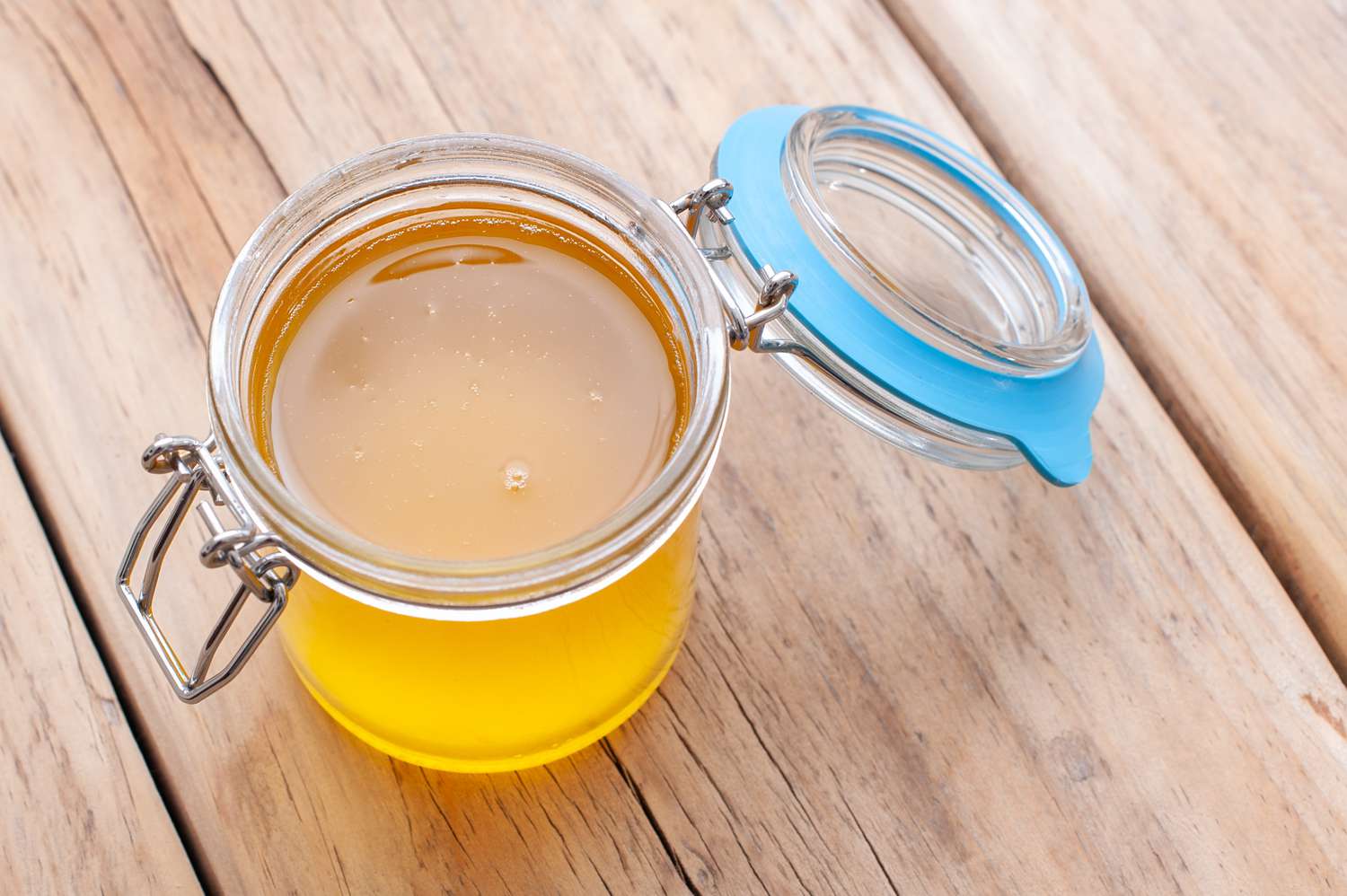
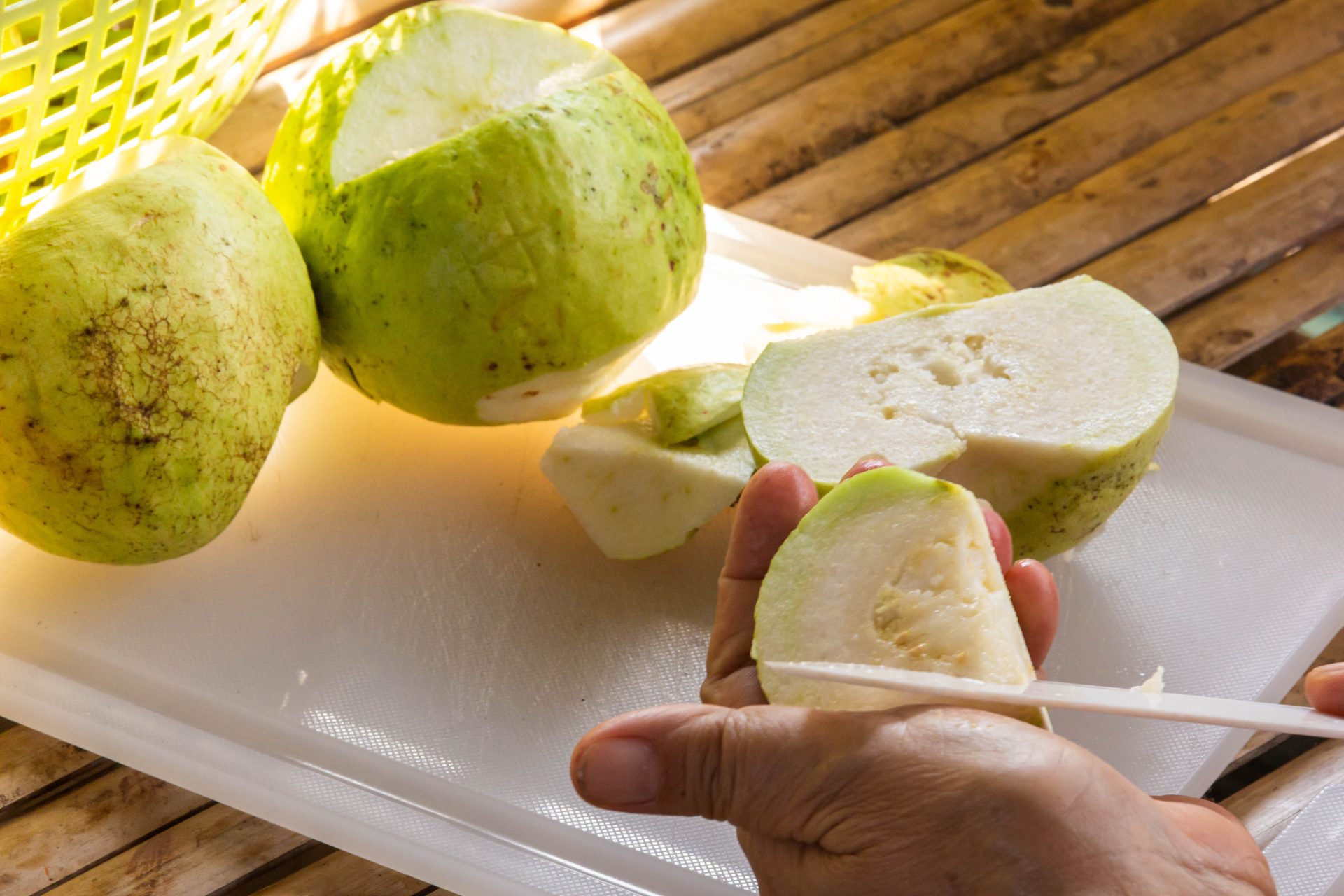



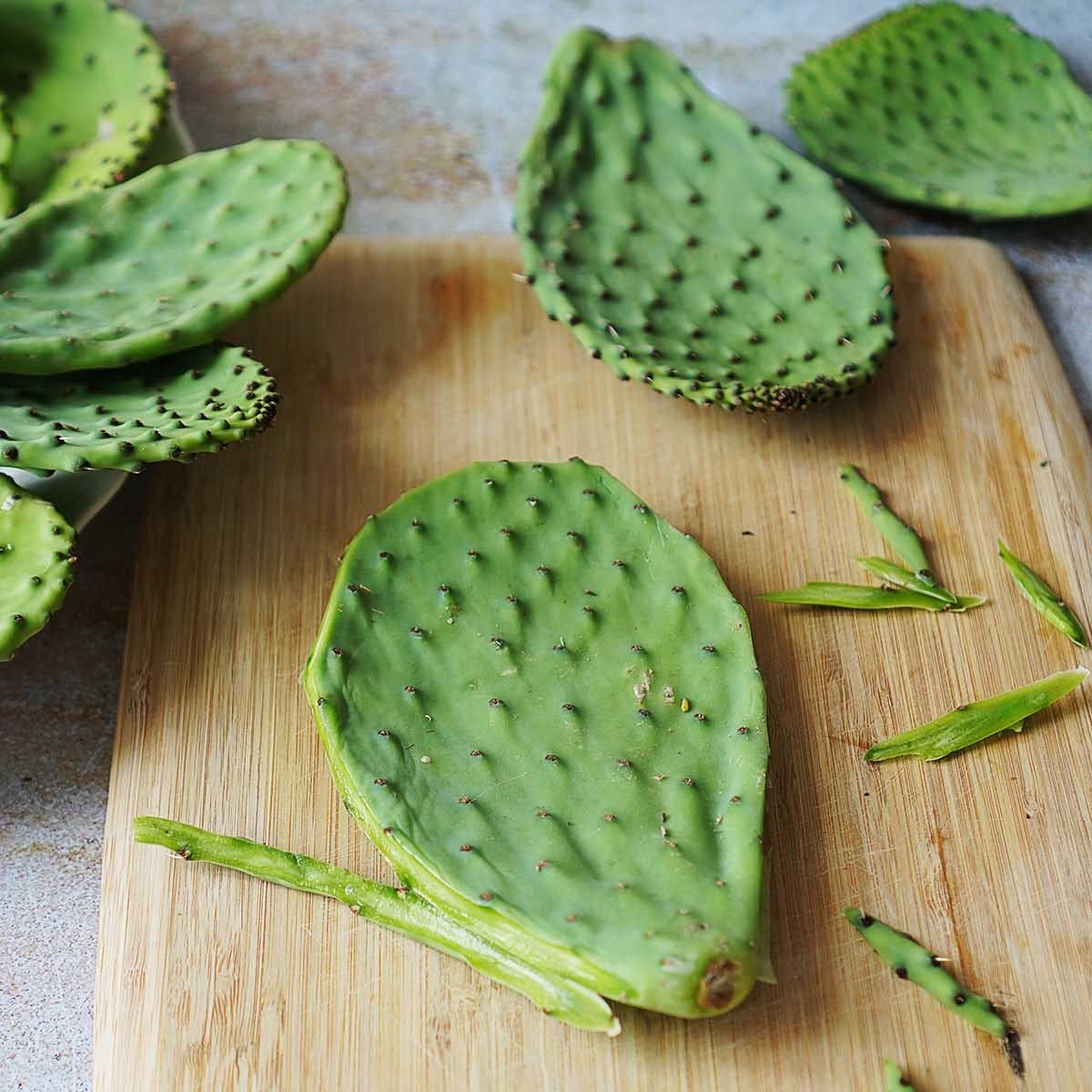
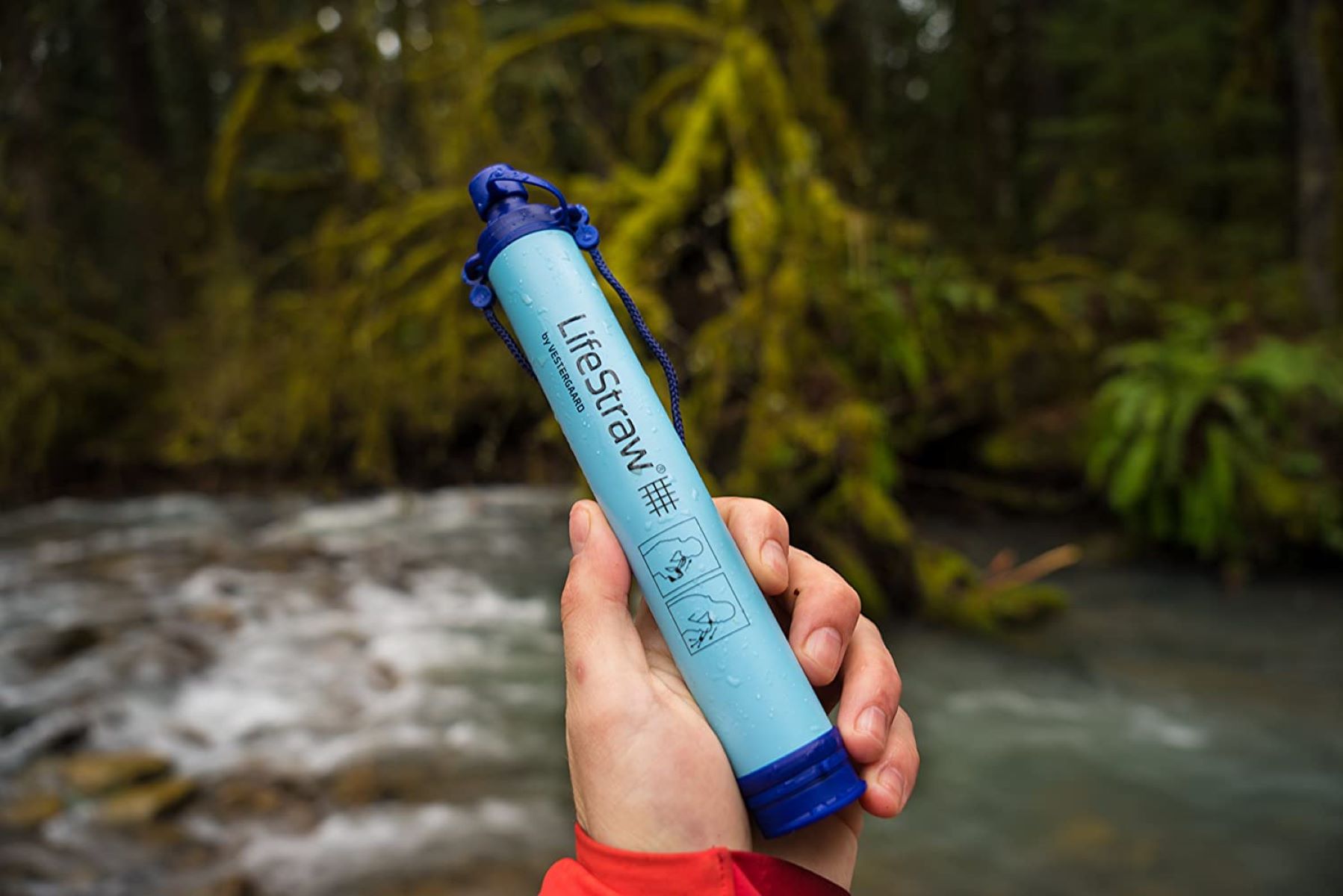




0 thoughts on “How To Store Cannabutter”